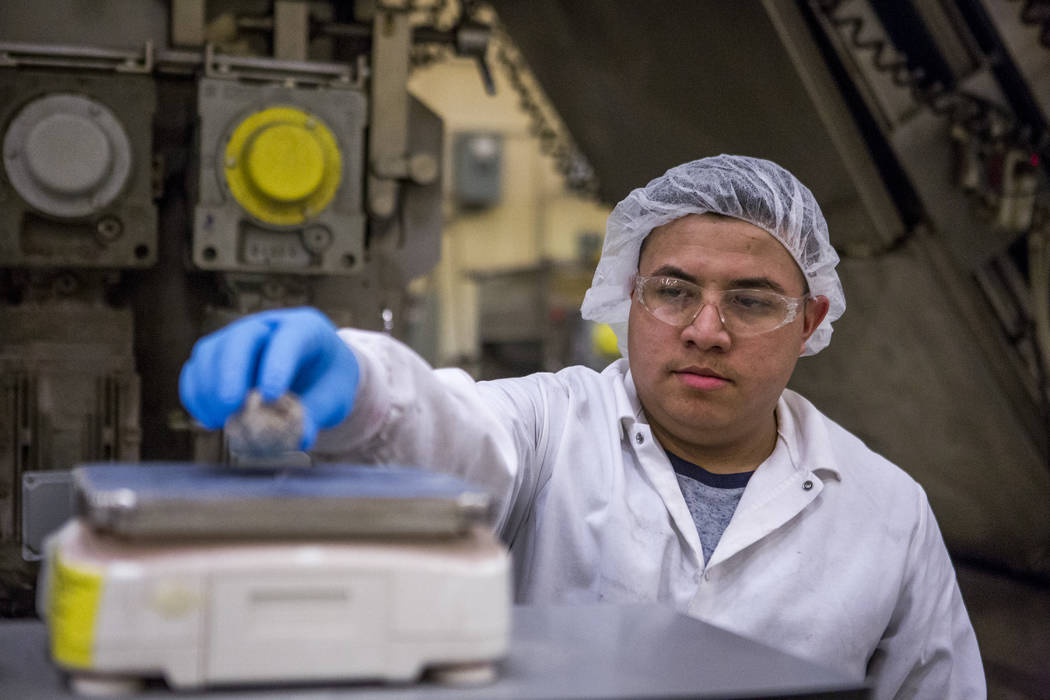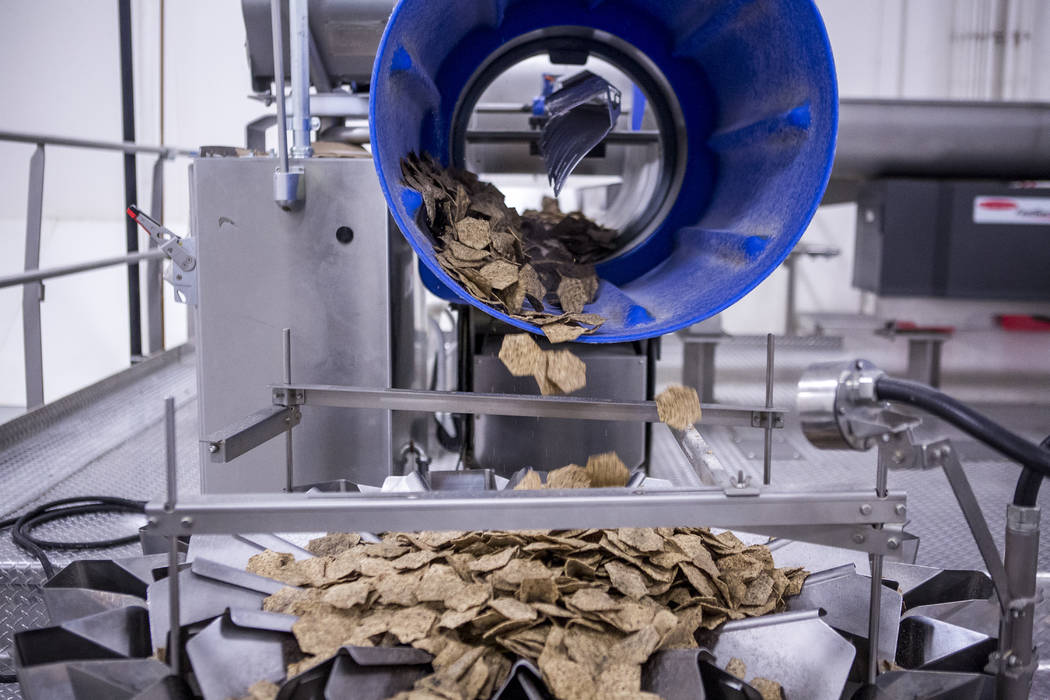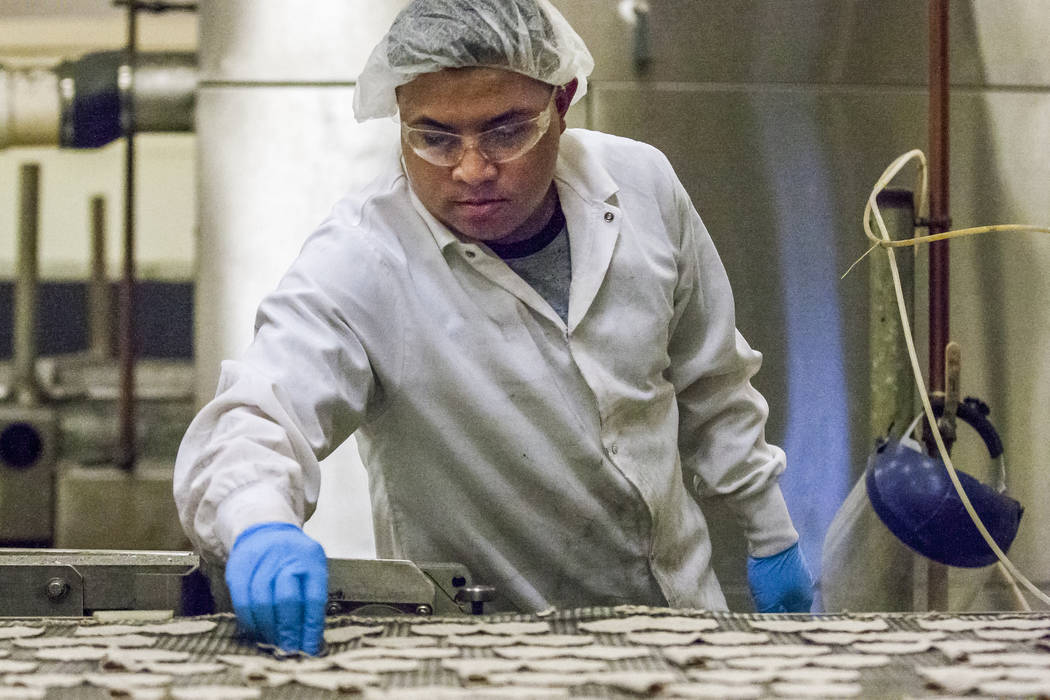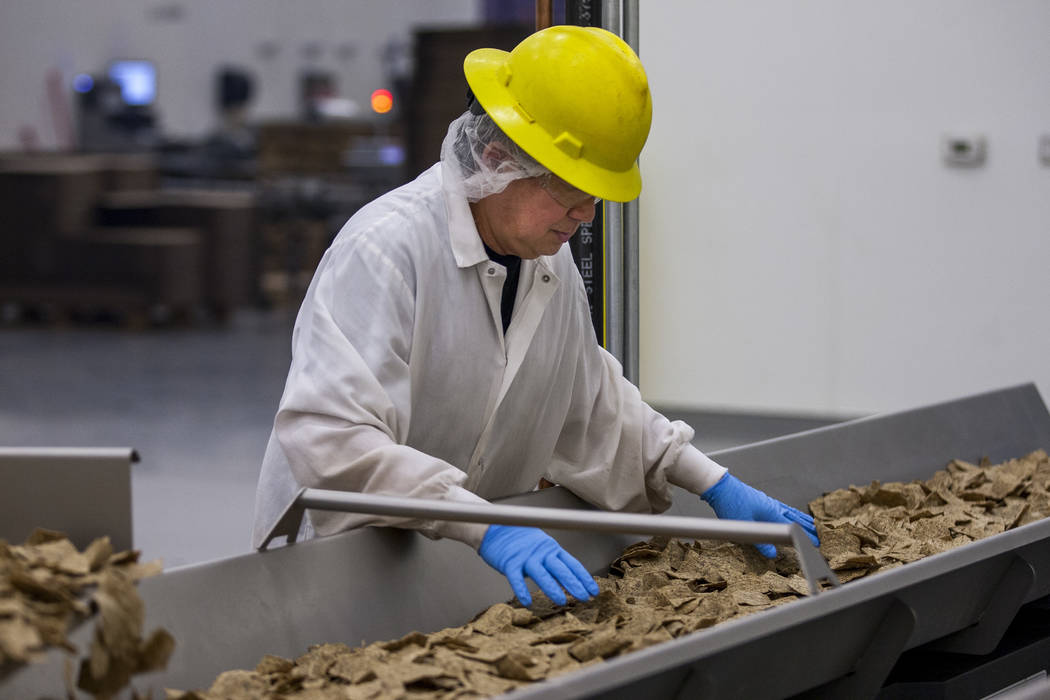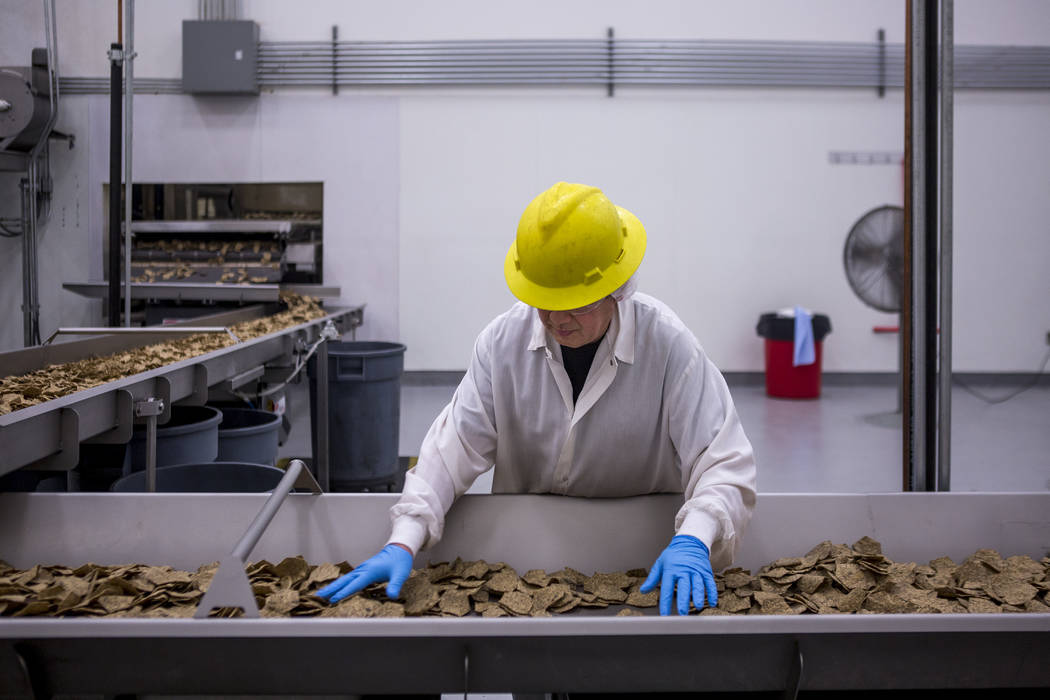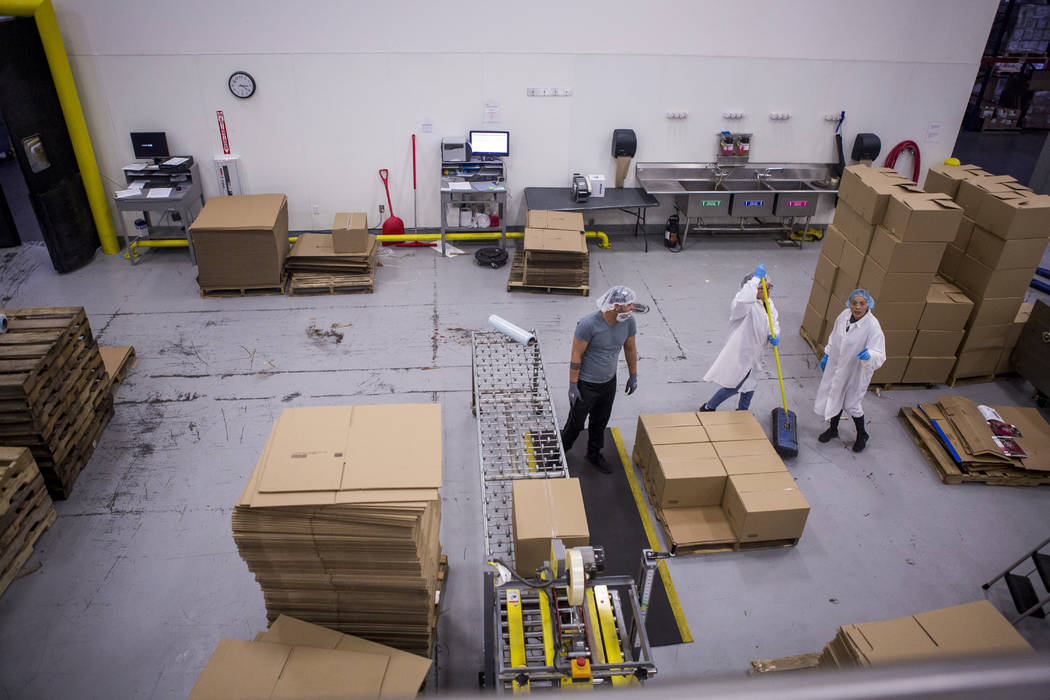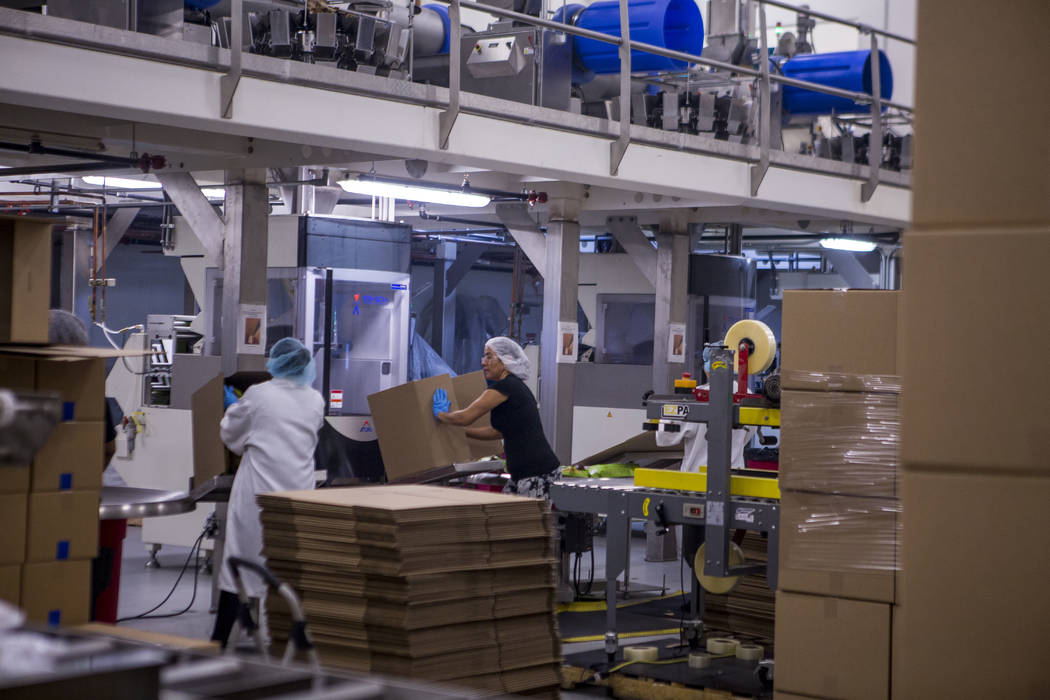Food leads the manufacturing pack in Southern Nevada
Nevada’s manufacturing industry is heating up. But it’s not the type of manufacturing you might think.
“It’s a multi-step process. Corn is cooked, washed and ground, then pressed out into tortilla chip shapes,” said Allan Perkins, director of manufacturing at Las Vegas tortilla chip manufacturer R.W. Garcia. “They are first baked at about 700 degrees Fahrenheit. Then they are lightly fried in corn or sunflower oil at about 330 degrees Fahrenheit.”
Perkins said R.W. Garcia added 35 employees between its two 65,000-square-foot facilities last year, contributing to Nevada’s roughly 23,498 employees in manufacturing in 2017. That’s up 16 percent, or 3,218 jobs, from 2011, according to data from the Nevada Department of Employment, Training and Rehabilitation.
A December report on Southern Nevada by Las Vegas-based Applied Analysis said, “Employment in the manufacturing and logistics industry has outperformed the national average in each of the past six years. And, since 2011, industry employment has grown at two and a half times the national rate.”
The 16 percent increase in manufacturing as a whole means Nevada is “starting to reap what we have sown,” Jeremy Aguero of Applied Analysis said.
In June 2011, Gov. Brian Sandoval signed Assembly Bill 339 into law, creating the Governor’s Office of Economic Development with the goal of increasing manufacturing — and particularly advanced manufacturing — in Nevada, to help create high-paying jobs and decrease Nevada’s reliance on tourism and hospitality.
But to include food manufacturing in measuring progress of that goal is a bit “misleading,” said Gary Hufbauer, a senior fellow and trade expert at the Washington, D.C.-based Peterson Institute for International Economics. “When people think of manufacturing, they think of metal bashing of one kind or another, and they certainly don’t think of food.”
While food manufacturing companies added just more than 665 new jobs between 2011 and the first quarter of 2017, fabricated metal product manufacturing accounted for 453 new jobs in the same time, according to data from the Nevada Department of Employment, Training and Rehabilitation.
Always a budget for food
Not all manufacturing is created equal, said Robert Lawrence, a research associate at the National Bureau of Economic Research and professor of international trade and investment at Harvard University.
“It isn’t true that just because an industry is labeled as manufacturing that it provides good jobs,” he said.
“There are good jobs and bad jobs in both manufacturing and in services.”
In Clark County, the average weekly wage in food manufacturing, $714, is $60 below the accommodation industry, $774, according to data from the Nevada Department of Employment, Training and Rehabilitation.
Lawrence said food manufacturing is still helpful to Nevada’s economy.

Food, unlike tourism, is not cyclical, he said.
“Food is something you always have to eat,” Lawrence said, regardless of any dents in discretionary spending.
And Lawrence said fewer jobs have been displaced by automation in food manufacturing compared with other subsectors, which means jobs might be more stable in food manufacturing. At least until technology further evolves.
Perkins said he would use more robots if they were technologically advanced enough to make sense for R.W. Garcia’s production line.
“Robotics work very well if you have a pretty consistent-sized product. For example, if you always have a 10-ounce bag or a bag that’s within 4 or 5 ounces of a 10-ounce bag. We make bags all the way from 2½ pounds to 6½ ounces.”
Recruitment efforts
Paul Anderson, incoming director of the Governor’s Office of Economic Development, said it would make sense that Nevada’s food manufacturing saw an uptick because there was an uptick “in just about every sector” in the state as the economy continues its rebound from the Great Recession.
At the same time, many food manufacturers have set up operations or relocated to the state for business advantages, and many of those were qualified for and received tax abatements to do so.
“A lot of this is market-driven,” Anderson said. “It’s not that we’re singling out food manufacturing.”
R.W. Garcia received $449,203 worth of tax abatements in 2014.
Perkins said R.W. Garcia opened a facility in Las Vegas in 2014 because of the state’s “business-friendly” environment, its “transportation-friendly” location and its workforce.
The economic development office works with the Las Vegas Global Economic Alliance and other partners to recruit advanced manufacturing companies to Southern Nevada with tax abatements.
Of the 36 companies the alliance recruited to Southern Nevada in 2017, 62 percent are categorized as manufacturing logistics, the alliance said.
“As we enter 2018, we are again expecting more than 60 percent of this year’s projects in the pipeline to fit the same category,” said Jared Smith, chief operating officer of the alliance.
“Food manufacturing has evolved throughout the years with the emergence of new technologies and has grown 25.8 percent in employment since 2011, creating jobs for Southern Nevadans in areas such as mechanics, electronics, safety, environment and policy.”
Contact Nicole Raz at nraz@reviewjournal.com or 702-380-4512. Follow @JournalistNikki on Twitter.



